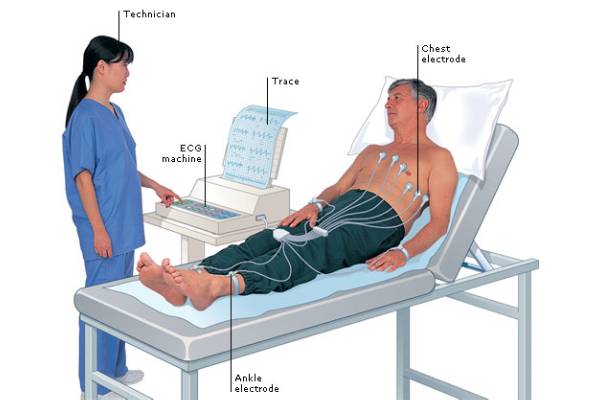An electrocardiogram — abbreviated as EKG or ECG — is a test that measures the electrical activity of the heartbeat. With each beat, an electrical impulse (or “wave”) travels through the heart. This wave causes the muscle to squeeze and pump blood from the heart. A normal heartbeat on ECG will show the timing of the top and lower chambers.
An ECG gives two major kinds of information. First, by measuring time intervals on the ECG, a doctor can determine how long the electrical wave takes to pass through the heart. Finding out how long a wave takes to travel from one part of the heart to the next shows if the electrical activity is normal or slow, fast or irregular. Second, by measuring the amount of electrical activity passing through the heart muscle, a cardiologist may be able to find out if parts of the heart are too large or are overworked.

Why it's done?
An electrocardiogram is a painless, noninvasive way to help diagnose many common heart problems in people of all ages. Your doctor may use an electrocardiogram to detect:
What are types of electrocardiographic procedures?
An electrocardiogram (ECG) is a diagnostic test that is used to detect abnormalities in the heart’s rhythm, as well as to provide important information about damage to the electrical system of the heart, heart attacks, structural abnormalities in the heart’s walls, and more. Weill Cornell provides the full range of advanced electrocardiography services, including:

 WhatsApp us
WhatsApp us